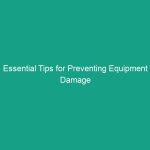Good morning team!
Today, we’re going to discuss a critical aspect of Workplace Safety: preventing falling objects. This topic is essential not just for compliance with Safety Regulations but also for ensuring that all of us go home safe at the end of the day. Falling objects can lead to severe injuries or even fatalities, and it’s our responsibility to mitigate these risks.
Understanding the Essential Guide to Preventing Falling Objects
The essential guide to preventing falling objects focuses on identifying Hazards associated with items that can fall from heights, whether it be tools, materials, or even structural components. These Hazards are particularly relevant in construction sites, warehouses, and manufacturing facilities.
Every year, thousands of workers are injured due to falling objects, which can result in lost workdays, increased healthcare costs, and emotional distress among employees and their families. Understanding this hazard helps us recognize that it impacts our daily operations and overall workplace morale.
One common misconception is that falling objects are only a concern in high-rise construction sites or during extreme weather conditions. In reality, they can occur in any Environment where work is performed at height or where items are stored overhead.
Key Hazards, Risks, and Safety Considerations
Falling objects can come from various sources, including:
- Tools slipping from workers’ hands
- Materials improperly stored at heights
- Equipment failing or being knocked over
- Improperly secured loads on vehicles or hoists
The real-world consequences of ignoring safety protocols around falling objects can be severe. For instance, a construction worker struck by a falling tool can suffer from traumatic brain injuries or fractures, leading to long recovery times and lost wages. Beyond physical injuries, such incidents can lead to decreased productivity and heightened anxiety among the workforce.
Best Practices, Procedures, & Actionable Advice
To prevent falling objects, here are some step-by-step safety Procedures that everyone must follow:
1. Conduct Regular Safety Audits
Regularly inspect your work environment for potential falling object hazards. Look for:
- Unsecured tools and materials
- Cluttered workspaces
- Overhead storage issues
2. Use Proper Personal Protective Equipment (PPE)
Always wear hard hats and other appropriate PPE to protect yourself from potential falling objects. Be sure these items are in good condition and fit properly.
3. Secure Tools and Equipment
Tools should be secured when working at heights. Utilize tool lanyards, tool belts, and other securing devices to prevent drops.
4. Store Materials Safely
Always stack materials properly and avoid overloading shelves. Store heavier items lower to the ground to minimize the risk of toppling.
5. Maintain Clear Work Areas
Keep work areas free of clutter. Ensure that walkways and workspaces are clear to prevent accidents from slipping or tripping.
Here are some real-life examples to illustrate these points:
- In a recent case, a worker was seriously injured when a hammer fell from scaffolding. The investigation revealed that the hammer was not secured properly. This incident highlighted the need for better tool management.
- Another incident involved materials falling from a poorly stacked pallet, which resulted in minor injuries but could have been avoided with proper stacking techniques.
Regulations, Standards, and Compliance
It’s crucial to be aware of the relevant safety regulations, such as OSHA Standards for Fall Protection and material handling. Compliance with these regulations is not just a legal requirement; it’s a way to ensure the safety and well-being of all employees. Regular Training sessions should be conducted to ensure everyone understands their responsibilities regarding falling object safety.
Employee Engagement & Discussion
Now, let’s open the floor for discussion. What safety challenges have you encountered related to falling objects? Are there any additional measures you believe we could implement to improve our current safety practices?
Conclusion & Key Takeaways
In summary, preventing falling objects is a collective responsibility that requires diligence and proactive measures. Key points to remember include:
- Regularly assess your work area for potential hazards.
- Use proper PPE and secure tools properly.
- Maintain clear workspaces and store materials safely.
- Stay informed about relevant safety regulations.
By applying these practices, we can create a safer workplace for everyone. Thank you for your attention and your ongoing commitment to safety. Let’s stay vigilant and proactive in preventing falling object hazards!


